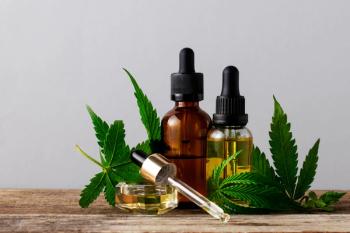
Metabolite Profiling of Iranian Traditional Yogurts with GC-MS
The Agricultural Biotechnology Research Institute of Iran (Tabriz, Iran) recently utilized gas chromatography-mass spectrometry (GC-MS) to explore the impact of different animal sources and regions in Iran on the metabolome profiles of traditional yogurts.
A recent study by the Agricultural Biotechnology Research Institute of Iran (Tabriz, Iran) utilized gas chromatography-mass spectrometry (GC-MS) with an untargeted metabolomics approach to examine the metabolite profiles of traditional Iranian yogurts made from cow, goat, buffalo, and sheep milk. The results showed that different animal milks significantly influenced physicochemical properties and fatty acid (FA) composition, resulting in diverse metabolites.
According to the article inspired by the study (1), this is the first research to explore the impact of different animal sources and regions in Iran on the metabolome profiles of traditional yogurts. These results provide useful information about how metabolites differ between species and can be used to make new dairy products based on milk compositions and metabolites, which will help with future formulations of autochthonous starters.
Dairy products are necessary for a balanced diet because of their high-quality protein and abundant micronutrients. Yogurt has especially experienced remarkable market growth over the past few decades. As in other areas, traditional fermentation methods in Iran were transmitted between generations, resulting in a diverse range of fermented milk and dairy products differing in terms of milk variety, processing techniques, and quality attributes (2). Production methods of traditional yogurt differ across the country, mainly depending on the type of milk used, the fermentation technique employed (such as back-slopping or spontaneous fermentation), and the type of fermentation used (either lactic or lactic-yeast fermentation). Other factors that affect the production process include whey removal (in the case of strained yogurt) and the inclusion of grains in the final product (2)
The article states that Iranian yogurts are mainly made from cow, buffalo, sheep, or goat milk, with each influencing the final product’s quality significantly. Local manufacturers are the leading producers in the yogurt and sour milk products category, suggesting that, while there are a few major suppliers with nationwide distribution. each Iranian city has its own yogurt producers that cater to demand within a limited geographical area, typically near their factories.
While the utility of GC-MS in the analysis of metabolite profiles in milk from various species has been well established (3-6), and have revealed that variations in milk composition due to geographical location, milk types, traditional production methods, and microflora can influence the volatile components in yogurts, to the best of the researchers’ knowledge, the fatty acid and metabolite profiles of Iranian traditional yogurt have not been investigated through metabolomics approaches. The goal of the study, therefore, was to examinefatty acids, volatile and non-volatile metabolites, and a non-targeted metabolomics approach using GC-MS.
In total, 36 metabolites, including esters, aldehydes, alcohols, and acids, were detected. Some important metabolites that changed yogurt profiles were 2-heptanone, methyl acetate, 2-propanone, butyl formate, and 4-methyl benzal. Associations between metabolite profiles and milk compositional traits were also observed, with statistical models showing a strong correlation between metabolite profiles and FA content.
References
1. Vaseghi Bakhshayesh, R.; Panahi, B.; Hejazi, M. A.; Nami Y. Metabolite Profiling of Different Iranian Traditional Yogurts Using an Untargeted Metabolomics Approach. Heliyon 2024,10 (15), e34760. DOI:
2. Ezzatpanah, H. Traditional Fermented Dairy Products of Iran. Int.Dairy J.2023, 147, 105773. DOI:
3. Gu, Y.; Li, X.; Xiao, R.; Dudu, O. E.; Yang, L.; Ma, Y. Impact of Lactobacillus paracasei IMC502 in Coculture with Traditional Starters on Volatile and Non-Volatile Metabolite Profiles in Yogurt. Process Biochem. 2020, 99, 61-69. DOI:
4. Murgia, A.; Scano, P.; Cacciabue, R.; Dessì, D.; Caboni, P. GC-MS Metabolomics Comparison of Yoghurts from Sheep's and Goats' Milk. Intl. Dairy J. 2019, 96, 44-49. DOI:
5. Sharma, H.; El Rassi, G. D.; Lathrop, A.; Dobreva, V. B.; Belem, T. S.; Ramanathan, R. Comparative Analysis of Metabolites in Cow and Goat Milk Yoghurt Using GC–MS Based Untargeted Metabolomics. Intl. Dairy J. 2021, 117, 105016. DOI:
6. Sharma, H.; Ramanathan, R. Gas Chromatography-Mass Spectrometry Based Metabolomic Approach to Investigate the Changes in Goat Milk Yoghurt During Storage. Food Res. Int. 2021, 140, 110072. DOI:
Newsletter
Join the global community of analytical scientists who trust LCGC for insights on the latest techniques, trends, and expert solutions in chromatography.




